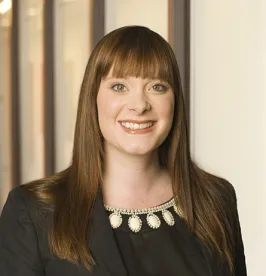Spoiler Alert: This Estate Planning Update references details from Season 4 ofDownton Abbey that is currently airing on PBS.
While the tragic death of Downton Abbey's beloved character, Matthew Crawley, was set in the early 1900s, the lessons learned apply today. In the Season 3 finale of the hit TV show, young Matthew died suddenly in a car accident, leaving behind his new wife and their infant son. Season 4 picks up six months later and portrays the deep state of mourning affecting Matthew's family, and the complications caused by the circumstances surrounding his death.
Matthew was thought to have died without leaving a Will, which caused his family much grief and confusion. Without a Will, the laws of the time required 1/3 of Matthew's estate to pass to his widow and the balance to transfer to his infant son. Debate soon centered around whom he would have wanted to manage his assets, a decision that would have a great impact on the future of his sizable estate. Just as his widow begins coping with his death and the debate over who should manage the estate reaches its peak, a letter is discovered hidden in one of Matthew's books. This letter, which is later determined to be a valid Will, leaves Matthew's entire estate to his widow and expressly states his intention that she, as sole heir, run his estate. This development, of course, changes everything for the family and perfectly highlights some important estate planning lessons that we can all learn from.
Lesson 1: Everyone Needs an Estate Plan
Matthew was only 36 years old when he died, seemingly years away from "needing" an estate plan. However, in an unexpected twist of fate (or in Matthew's case, brave writing), Matthew's life was cut short. His young family was left searching for answers and the grieving was made worse by not knowing if his wishes were being carried out.
No matter what your age, the importance of establishing an estate plan cannot be overstated. The best way to ensure that your assets transfer in accordance with your wishes, an estate plan provides your loved ones with one final gift – the peace of mind of knowing your last wishes will be carried out. If you do not have a plan, it is time to take this step. For those of you who already have an estate plan, you should periodically review your plan to confirm it still accurately reflects your wishes and that it utilizes the most effective estate planning techniques.
Lesson 2: Location, Location, Location
Your estate plan is not worth the paper it is written on if no one can find it after your death. In Matthew's case, hiding his Will in a book resulted in a 6 month delay in the carrying out of his wishes and certainly caused his family and friends unnecessary grief. Had this letter never been found, Matthew's property would have been distributed in direct conflict with his wishes and who knows what would have happened with the administration of his estate.
Your original estate planning documents should be kept in a safe, secure location such as a safe deposit box or home safe and the location of these documents should be shared with someone you trust. If you do not feel comfortable disclosing this information while you are alive, a note disclosing the location of these documents should be kept where it can easily be located at your home or in your office. A similar approach should be taken to disclosing the location of your digital assets, as finding these after your death can be even more difficult for your family and friends if direction is not provided.
Lesson 3: Name the Right Decision Makers
The final piece in an effective estate plan is choosing the right decision makers. In Downton Abbey, it did not take long after Matthew's death for his family to start debating who was best equipped to handle his estate. This is an important decision that can have a great effect on your legacy.
First and foremost, it is important to appoint someone you trust. Organization and timeliness are two important skills for any decision maker to have. You should also consider picking someone who has a good understanding of financial management and someone who understands the importance of working with good advisors. This person will be required to make decisions regarding the holding or liquidation of assets, the management of tax liabilities and the payment of other expenses, so it is important to choose someone who understands these issues.
Finally, consider how your chosen decision maker will work with the beneficiaries. In cases where there are continuing trusts, the trustee will be in a fiduciary relationship with the beneficiaries for the entire length of the trust (often times years). During this time, the trustee will likely have to make decisions regarding the timing and amount of distributions, which can lead to stress or conflict. It is important to choose someone who is comfortable in this role. Your estate planning attorney should be able to assist you in working through this decision.




 />i
/>i
